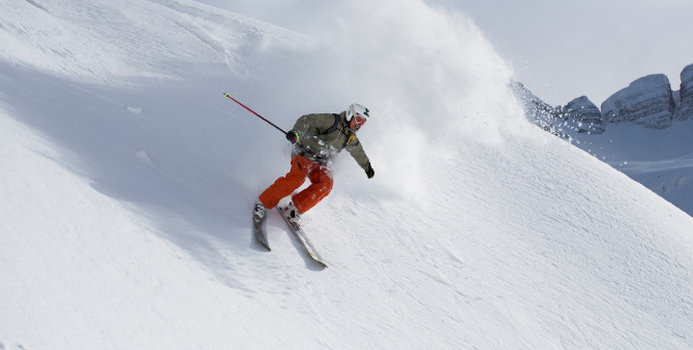Those who are looking to downhill skiing as a fun way to stay fit should know about the specific benefits that this recreational sport provides for the body. Downhill skiing helps work and strengthen muscle groups, raises the heart rate, and generally stimulates the metabolism and respiratory system. But beyond that, not all skiers know exactly how skiing helps produce various exercise results.
Aerobic and Anaerobic ExerciseUnless you read fitness journals you may not be familiar with the two different types of exercise known as aerobic and anaerobic exercise. Some of those who read a little about them are still confused, thinking that maybe anaerobic (literally, without oxygen) means that the participant isn't breathing! That's not what anaerobic exercise means, but it does have to do with a specific scarcity of oxygen in the body.
Anaerobic exercise is commonly defined as an exercise that is intense enough to generate a different kind of response from the body. Lactic acid starts to build up and the oxygen requirements necessitate a different kind of fuel processing in the body. Anaerobic exercise is also associated with specific heart rates that go above the range that's common for aerobic activity. Lots of aerobic activities become anaerobic when they reach the critical mass of energy output over time.
The Aerobic and Anaerobic Benefits of Downhill SkiingBasically, downhill skiing is an aerobic exercise for the body when the skier is relatively at rest, such as during coasting or a moderate ski control motion, or when the skier hasn't met the lactic acid threshold. But skiing also depends on quick, intense and coordinated moves, where anaerobic processes tend to kick in. The kinds of emergency control moves so prevalent in almost all downhill skiing make this sport not only an aerobic exercise, but an anaerobic one as well.
Safety With Downhill SkiingAlthough downhill skiing can be great for the body, and a really good, thorough workout, individuals need to carefully monitor their situation in order to avoid injury. Being properly dressed is important to avoid conditions like pneumonia, and skiers have to watch out for hidden ice spots that can cause them to lose control. Skiing puts a lot of pressure on the legs, and carefully restricting motion is the best way to guard against some severe lower-body injuries like sprains and bone fractures, as well as tears in muscle tissues.
Another issue with downhill skiing is one that applies to any anaerobic exercise. Individuals have to know about their body's lactic acid thresholds to make sure that excessive exercise doesn't cause unhealthy levels of lactic acid. This condition, however, is relatively rare. Doctors and fitness experts can give more detail about how to get the best results from downhill skiing, while minimizing the risks of injury.



